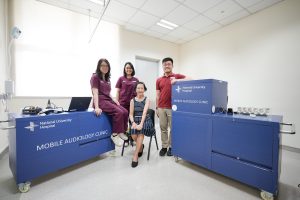Scientists from the University of Colorado (CU) Boulder have crafted an innovative breathalyser test powered by artificial intelligence (AI) that can detect COVID-19 swiftly and accurately.
The team utilises a frequency comb breathalyser, which uses laser light to distinguish between molecules, promising a transformative approach to medical diagnostics.
Study Findings
Between May 2021 and January 2022, the CU Boulder research team collected breath samples from 170 students. All participants had undergone a polymerase chain reaction (PCR) test in the previous 48 hours. Half tested positive and half negative. The whole process, from sample collection to result, took less than an hour. When compared to the gold standard PCR test, the breathalyser results showed 85% accuracy, considered excellent for medical diagnostics. The team surmised the accuracy would have been higher if breath samples and saliva/nasal swab samples were collected simultaneously.
Breathalyser Advantages
Unlike nasal swabs, the breathalyser test is non-invasive. Additionally, it doesn’t require users to abstain from eating, drinking, or smoking before use. Moreover, it doesn’t need expensive chemicals to break down the sample, making it a more economical choice. Interestingly, this test could even be used on individuals who are unconscious.
Breathalyser Mechanics
The breathalyser test uses a complex arrangement of lasers and mirrors. A breath sample is piped in through a tube. Thereafter, lasers fire invisible mid-infrared light at it at thousands of different frequencies. Tiny mirrors bounce the light back and forth through the molecules, travelling about 1.5 miles. Each type of molecule absorbs light differently, casting distinct shadows. This machine can differentiate these shadows or absorption patterns, distilling millions of data points down to a simple positive or negative result for COVID-19 within seconds.
Looking Forward
The research team is currently working on minimising these systems to a chip scale. They hope to enable real-time, self-health monitoring on the move. The vision for this technology’s future is ambitious, with potential applications extending to early detection of conditions like pancreatic cancer before symptoms appear.
Medical Perspective
This advancement in medical diagnostics is a testament to the power of interdisciplinary collaboration and cutting-edge technology. It capitalises on the unique ‘breathprint’ humans exhale. There are over 1,000 distinct molecules that offer clues about the body’s internal workings. With the integration of AI, this breathalyser test is an example of how machine learning can identify patterns and establish criteria to predict a diagnosis. While the technology is promising, it’s crucial to remember that we are still at the beginning stages of understanding the complex correlations between various molecules and specific health conditions.
In Asia, where the COVID-19 pandemic has had a significant impact, the development and deployment of such non-invasive, quick, and efficient testing methods could revolutionise the way we manage and control the spread of the virus. It could also pave the way for a new era of healthcare, where disease detection is as simple as breathing into a device. Therefore, as we continue to battle this pandemic and prepare for future health crises, such innovative approaches will be pivotal in safeguarding public health.














